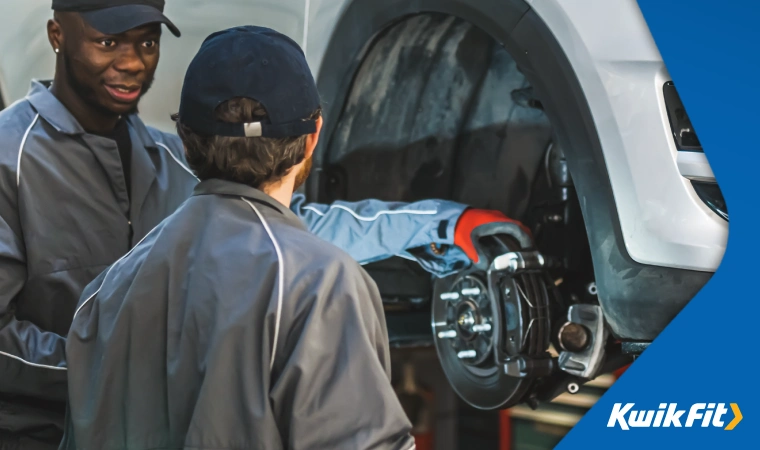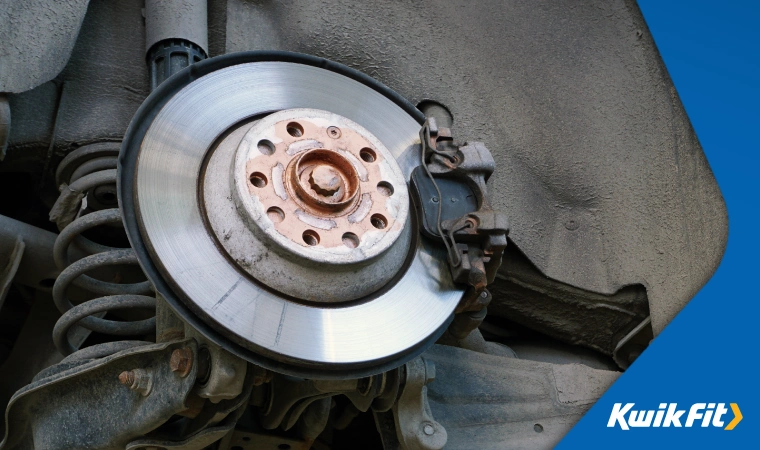Understanding the Different Parts of a Car Wheel
Jack Dreyer | Thursday 16th May 2024 10:00am

The humble wheel: arguably the most important invention in the history of humanity. How far weíve come from the simple horse and cart to the first motor engine! Cars are now incredibly complex machines ó with different types of fuel, cruise control and parking cameras ó and yet, we forget about the most basic thing which defines a car: its wheels.
So, what actually makes up Ďa wheelí? On the surface, itís a cap and a tyre ó but the modern car has many various elements which make up the mechanism hidden away behind the hubcap. Understanding the intricate parts of your car's wheels is not only useful context to have as a motorist, but could potentially save you a fortune when it comes to car maintenance, care, and repairs.
Read on to find out more.
The modern car wheel
Car wheels have gone through quite an evolution, being almost reinvented altogether (if you'll pardon the pun). The first cars had tyres much like bicycles, but, eventually, the pneumatic tyre was invented by Michelin, one of the many tyre brands we are happy to stock today.
Over the decades, the car wheel went through various changes in design, metal, and tyre quality, becoming safer and more durable. The car wheel therefore became more complex as we sought to make it more efficient and safe, which changed the way turning and braking worked entirely.

How do modern wheels and tyres work?
Letís start with the wheel itself ó from outside to inside. The following sections outline the parts of the wheel that we mostly deal with on a practical level, whether itís changing a tyre or topping them up with air.
The wheel rim and barrel
The outer and inner rims, which sit on either side of the barrel, hold the tyre in place. The barrel sits against the tyre and closes it off so that it retains air pressure. The rims fix the tyre securely. The carís size determines the size and width of the rim, so this is what a tyre size fits to.
The centre of the wheel
Working from the outside in, the rims of a wheel are connected to the outer lip, which sits just over the tyre and then extends to the centre of the wheel. This connection goes through the spokes, where, right in the middle, the centre cap is surrounded by something called Ďlug holesí.
The lug holes
The lug holes usually surround the centre cap of the wheel and are holes which house the lug nuts. Lug nuts secure the wheel to the vehicle by attaching to the wheel studs which are part of the wheel hub. Weíll go into this more later, but essentially, these holes in the main face of the wheel hold the lugs which keep the wheel attached to the car.
The valves
The valve stem sits on the inside of the wheel and is important because it holds the tyre pressure within the assembly, and therefore is an access point if you need to change the tyre pressure at any time. A valve cap is a secondary seal which protects the valve from dirt if itís in good condition.

Behind the wheel
The wheel itself attaches to the wheel hub, which also contains the wheel bearings. Bearings are metal balls which help with balancing and weight as the wheel turns.
Around the wheel hub is the rotor which the callipers press against to stop the wheel when you brake. The wheel hub connects to the drive shaft which transfers torque from the engine to the wheels thus moving them. You can also find the bleed nipple on the brake calliper which allows you to bleed any air from your brake fluid.
Behind the wheel, there is also the car suspension which includes a coil spring and a shock absorber, also known as a damper. The shocks and springs work together to cushion the car by absorbing any impact from bumps, potholes, and uneven surfaces. Your car then stays stable and your tyres remain in contact with the road surface which is important for your brakes to work effectively. When your shock absorbers are worn it can add 2 metres to your braking distance at 30mph because the tyres have less contact.
Fix your common car wheel problems
There are plenty of things which can go wrong with your carís wheels ó the most obvious being punctures to your car tyres. However, you should also consider and look out for other problems such as irregular wear, cuts, and bulges in your tyre.
You may also have to consider when you may need wheel alignment or wheel balancing. Sometimes, what feels like a problem with our carís wheels can actually be a sign of another separate issue, for example, tyres which are worn out unevenly could potentially be a sign of damaged suspension.
The best way to keep on top of any wheel issues and maintenance is by taking your car in for regular services with your nearest Kwik Fit technician. Spotting any problems early can save money in the long run, not to mention that a serious problem could escalate to a health risk. We have a great blog which covers all aspects of motoring from testing to tyres, and brakes to bumpers, which could help you understand your vehicle better and spot any problems before they get serious.
Any facts, figures and prices shown in our blog articles are correct at time of publication.
Featured Articles
Is it Illegal to Drive With One Headlight?
Saturday 19th July 2025
Wondering if itís illegal to drive with one headlight? Learn about the safety risks and penalties of illegal blown bulbs and why you should fix them promptly.
Air Con in EVs & Hybrids: Experts Answer Your Questions
Monday 30th June 2025
Does air con drain EV batteries? Can you use the air con while charging an electric car? Find out the answers to these questions & more from Kwik Fitís experts.
Why Is Your Car Making a Noise? Fixes & Tips
Friday 13th June 2025
When your car starts making unexpected noises, it can certainly be quite disconcerting; it may be nothing to worry about, but hereís what you need to know.









